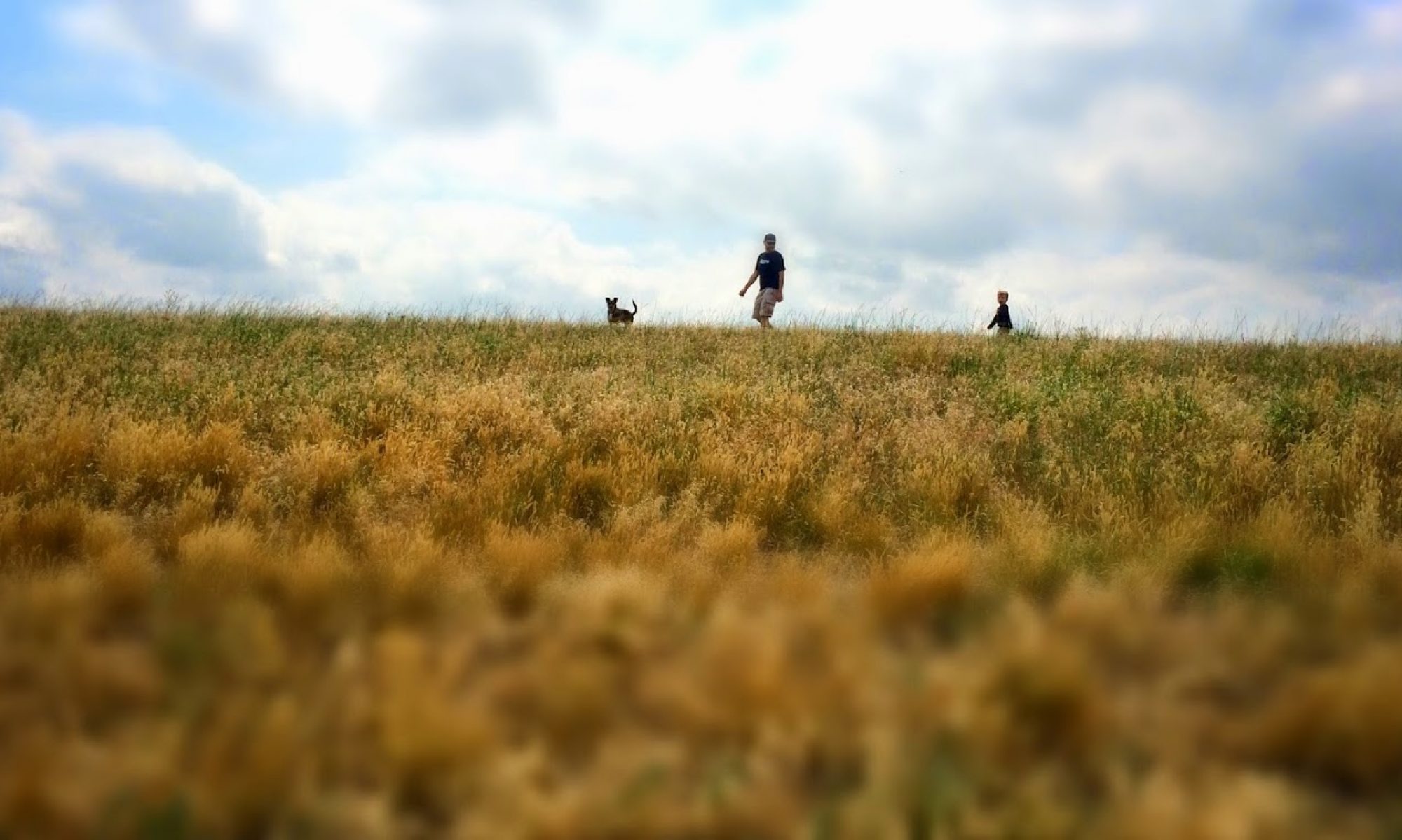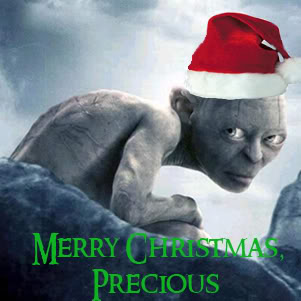After my post yesterday, Dave asked me what I thought about the ending of the movie. He was a bit vague with the wording of the question, possibly to keep from spoiling people reading the conversation on G+, but as I’ve read his thoughts on the subject, I had a pretty good idea what he was specifically referring to, and (huge surprise) I had some thoughts about it.
So, far more than yesterday, this post will contain spoilers. You’ve been cautioned.
Now then.
Disclaimer: I love Dwarves
This will come as a surprise to precisely no one, nor will the fact that it all started with The Hobbit. Character-building moments in the story are few and far between for anyone who doesn’t have furry feet, but there are a few; many involving Balin, who remains my favorite among the company as they are portrayed in the book. (I really like the movie version of Bofur.)
I think my preference for Balin grew out of the fact that he seemed the closest with Bilbo – he did things the other dwarves didn’t, and they were kind things. He was first dwarf to actually reenter the Mountain after 170 years. And he could speak to birds, which is pretty cool.
Balin put dwarves on my horizon. I kept my eyes out for them when I got to the Lord of the Rings, and I was rewarded with Gimli’s bluff and bluster and hidden heart of gold. He felt young to me – full of surety and ignorance, but not so calcified in his ways that he couldn’t change. He learned to see the wonder in things he once feared. Loved something he knew he could never have. Pledged himself to goals he believed utterly lost.
And he taught an elf something about beauty, which is a hell of a thing.
After four or five trips through The Hobbit and The Lord of the Rings, I picked up The Silmarillion. References to dwarves in this decidedly elf-heavy book are pretty thin on the ground, but the parts where they are mentioned, I remembered.
“Since they were to come in the days of the power of Melkor, Aulë made the dwarves strong to endure. Therefor they are stone-hard, stubborn, fast in friendship and in enmity, and they suffer toil and hunger and hurt of body more hardily than all other speaking peoples; and they live long, far beyond the span of Men, yet not forever.“
So, in Tolkien’s creation, Dwarves aren’t like elves or men; they weren’t originally part of “the Plan.” They weren’t created so much as crafted by the smith of the gods. They’re the adopted children, the outsiders, the ones made according to a different set of rules; created to be strong and resistant to the evils in the world (one reason the Seven Rings didn’t bring any dwarves into Sauron’s service). They’re secretive, proud, tougher than any other people, and equally unable to forget a wrong or debt. They long for beautiful things, but at the same time don’t seem to know what to do with them once they have them, and this absolutely extends to matters of affection and love.
They’re noble and doomed, even more so than elves, at least in part because dwarves are far more visibly flawed. They never seem to get anything just exactly right; even when they get what they want, they push for more and ruin what they have. They do the wrong things for the right reasons, or the right things for the wrong reasons, and not only pay the price, but inflict that price on those they love and hold dear.
They’re pretty much the easiest thing in the world for a boy in his teens to identify with.
So let’s talk about Thorin’s company and The Hobbit.
An Unexpected Pity Party
From the very beginning of the book, we get the story of Thorin, his family, and everything the dwarves lost when the dragon came to Erebor. Did they make a place for themselves in the Blue Mountain and Ered Luin? Yes, yes, but that doesn’t matter, because there’s this Lonely Mountain, see, and the dragon took that from us, and we want it back.
Thorin &co. go on like this for the next 250 pages or so. Especially Thorin. I think it’s fair to say that the idea of some kind of showdown between these wronged dwarves and Smaug the Tremendous is pretty clearly telegraphed.
And then Tolkien lets us down.
The problem is, Tolkien functioned both as storyteller and historian for this amazing world he created. That’s fine, most of the time, but every so often he’d mess things up whilst sitting down at his desk and pull on one hat when he really should have been wearing the other.
In this case, Smaug hit the pages and Tolkien found himself in historian mode, instead of storyteller.
See, a storyteller knows that if you set up the Dragon and What The Dragon Did To Us for a couple hundred pages, you owe it both to those characters and the reader to give those dwarves some closure. A showdown. Something.
You know what happens between the dwarves and Smaug?
Nothing. Absolutely nothing. Not one word is exchanged. No barbs are traded. No blows given or received.
Bilbo bandies words and steals a cup. The dragon flies around a bit and smites the mountainside, then heads off to Laketown for a some desultory wrack and ruin.
Bard kills him.
The dwarves cower in a dark tunnel for two days, send Bilbo down to see what’s going on, then spend the next week or so dumpster diving in Smaug’s horde.
Lame.
And why did it shake out this way? Because Historian Tolkien knows who Bard is, who he’s descended from, and the fact that because of all that, he has some of the same claim to vengeance as Thorin.
Tolkien knows that. The reader doesn’t really know any of it, but Historian Tolkien has assumed direct control of this section of the book, closure be damned, and he’s going to tie a bow (see what I did there?) on the virtually unknown epic cycle of the Men of Dale. So there.
Jackson Gives Us (Action-Packed!) Closure
Now, please don’t get me wrong: I agree that the last action scene in The Desolation of Smaug owes a bit more to the Temple of Doom than Tolkien. It’s a little over the top. Yes. Conceded.
However.
Just for fun, let’s ignore the crazy bits and look at what actually happens, because I believe Jackson managed to hide some really amazing story chocolate in the action peanut butter.
Thorin Needs Your Help
That’s what Jackson’s thinking as he squares off with this section of the story. The whole thing where Thorin never ever actually sees the dragon, or confronts him, or anything? That has got. to. go. That’s shit. Acknowledged.
But now you have a problem, and it’s the same problem Storyteller Tolkien had when he was writing it (which may be why he let the historian take the lead).
Thorin has no play to make.
He’s got no army and, let’s be serious: he needs one. Smaug is force of nature – an armored, hurricane-spawning volcano. What can Thorin possibly do?
He can use the mountain.
Yes, Smaug is the Chiefest and Greatest Calamity of the Age, but in this place – within Erebor – he is first and foremost a usurper. He might have slept on a golden bed in the bowels of the mountain for the last 150 years, but it is not his home. He doesn’t – can’t – know it the way he would if it were.
But Thorin does.
(“Home” is a big theme, have you noticed? There and Back Again, for both the dwarves and the hobbit.)
Over a hundred years of wandering. Losses suffered. Grandfather dead. Father mad and then dead. But still Thorin knows these halls, these stones, as if he never left. You can hear – feel – the love of the place in his voice when he steps inside the Door.
And he’s not alone. All the dwarves with Thorin (the ones old enough to have been here in the first place, I’ll note) remember it all, as if they had just shut the lights off and stepped out yesterday.
But so what?
It doesn’t matter how well you know the nooks and crannies – you still can’t fight Smaug. Dwarves are great fighters, but they are outmatched and utterly under-equipped – it’s impossible to fight.
But… here’s the thing.
Dwarves can fight, but that’s not who and what they are. Not really.
What they are is tough. Secretive. Cunning craftsman who never forget a wrong.
The first thing they do when they realize they need to face Smaug? They light the forges.
Dwarves make things – amazing, horrible, wonderful, terrible things.
So let’s just skip past all the action stuff. That’s movies – that’s just what you need to do at the end of a fantasy action movie. Deal with it. What’s happening throughout all that, hidden from us a bit, because they’re secretive, these dwarves, is that they’re making something.
Let’s get to that Grand Hall.
The forges have fired. The gold is flowing, molten and deadly and handled by the dwarves with such a native aplomb that you’d think they were carrying a glass of water to a sleepy toddler.
It’s all poured into this great mold, atop which stands Thorin, and here comes Smaug.
This is a moment. This is important. Thorin is back in his home, and it is his home, over which he has immediately and completely asserted his will and mastery. All the elements therein, that he knows so well, come together to allow him to face Smaug face to face; not just face to face but at eye level. To call him out and then, because this is Thorin and he still mourns his dead King, pull the cord and confront the dragon with Thrór – the true king under the mountain and, at that moment, the one thing within Erebor as mighty and majestic as Smaug himself, standing for all the dwarves who lost their home.
And then the thing comes apart and douses the Dragon in molten gold, because it’s dwarves who have done this, and a Dragon they are punishing, using their forges to drown him in the greed (theirs and his) that first brought him to to the mountain.
They are dwarves. They set out to do a thing, and they did it.
But, they are dwarves, which means they achieve exactly what they wanted – Smaug driven from their home – at terrible cost. An awakened scourge, set upon the land. A victory, bought with unavoidable tragedy.
They cheer, and Bilbo (who is not a dwarf and never will be) looks on in horror.
Is it an upbeat ending? No. There’s a victory there, though, and great and amazing symbol-heavy closure for Thorin, from my point of view. It’s so dwarvish my beard grew three inches just watching it.
It’s terrible, what’s about to happen, and an unexpected place to end, but for the story it was set to tell, it was (by my lights) exactly right.
“What have we done?” whispers Bilbo, and we have a year to think on all the answers to that question.


